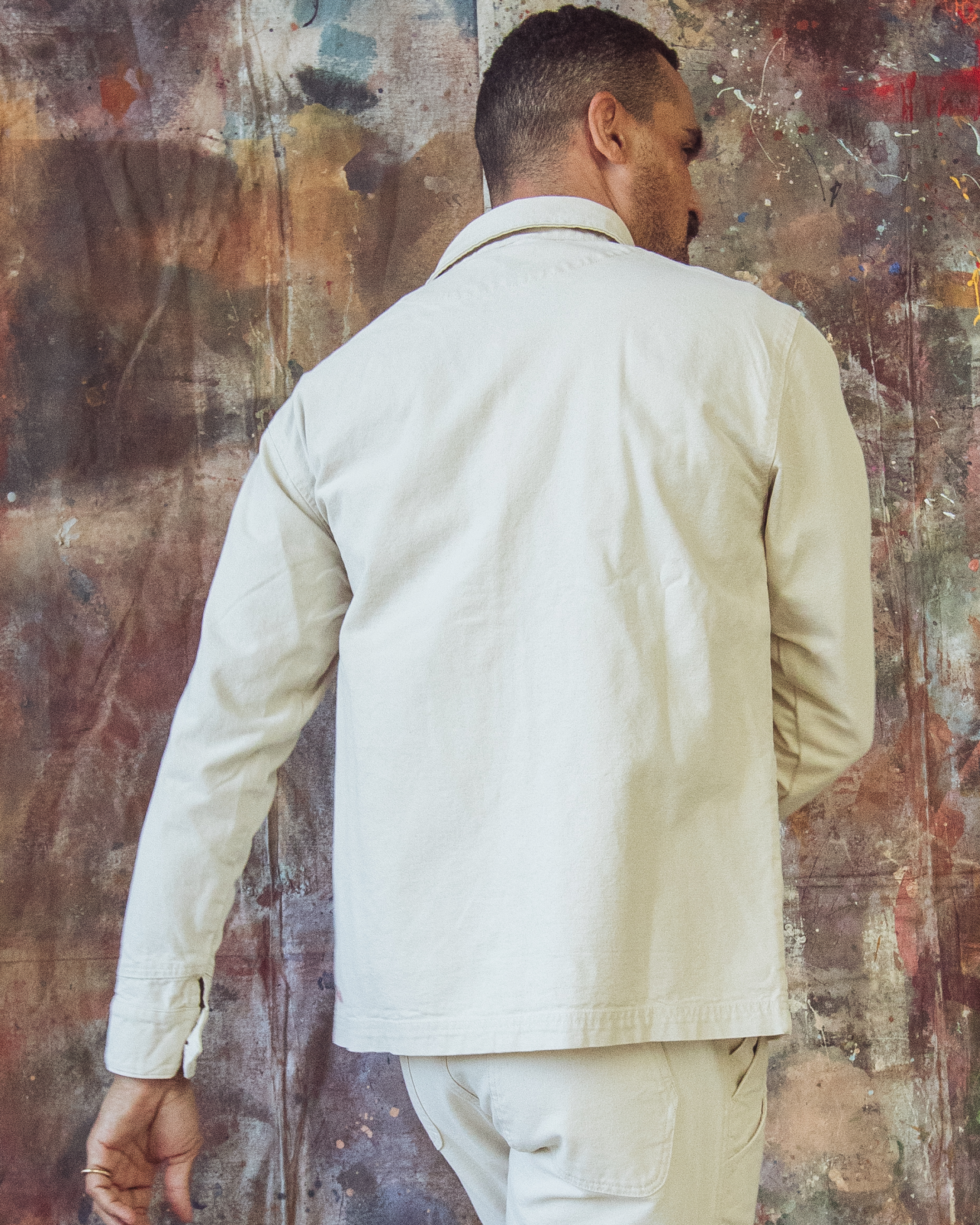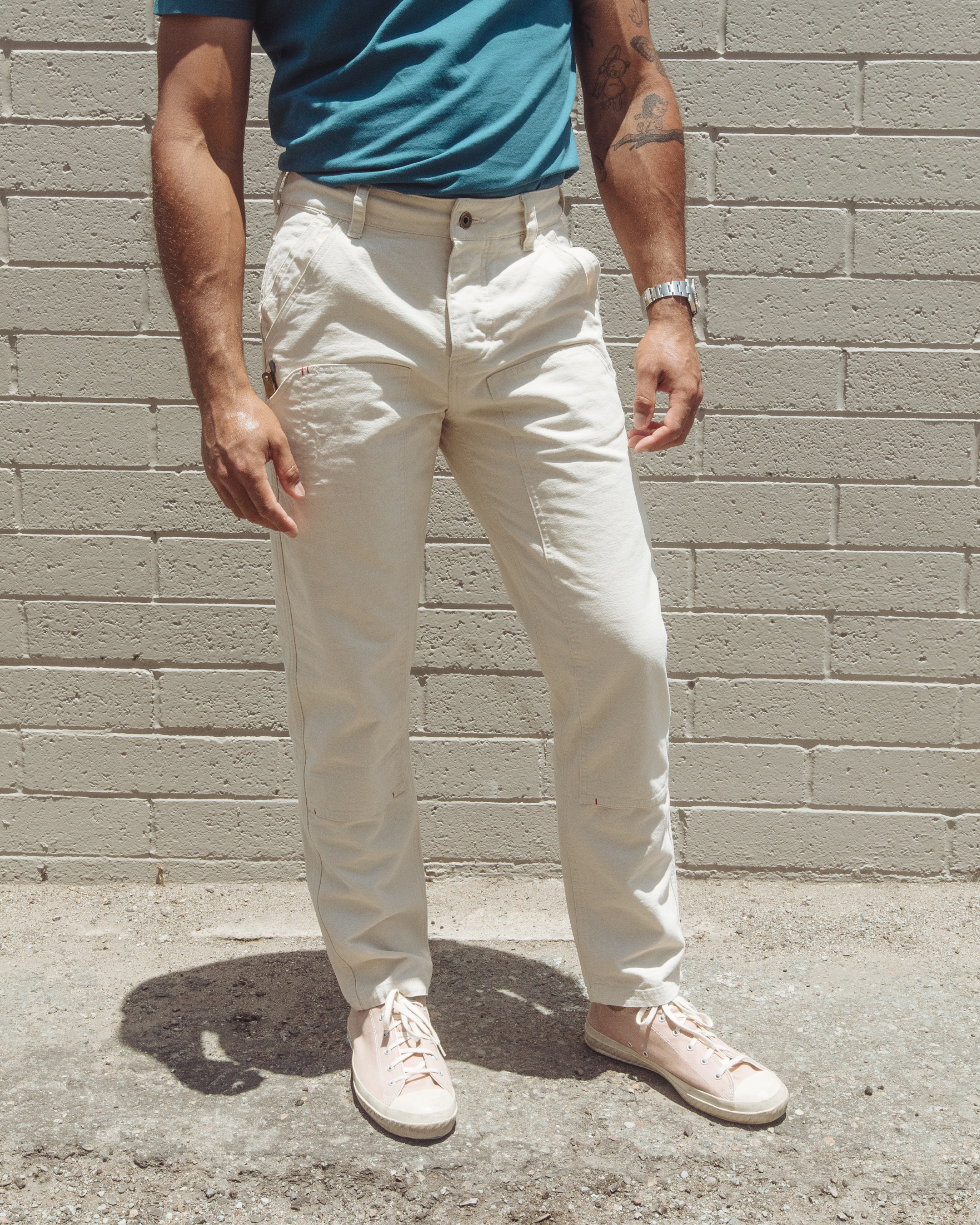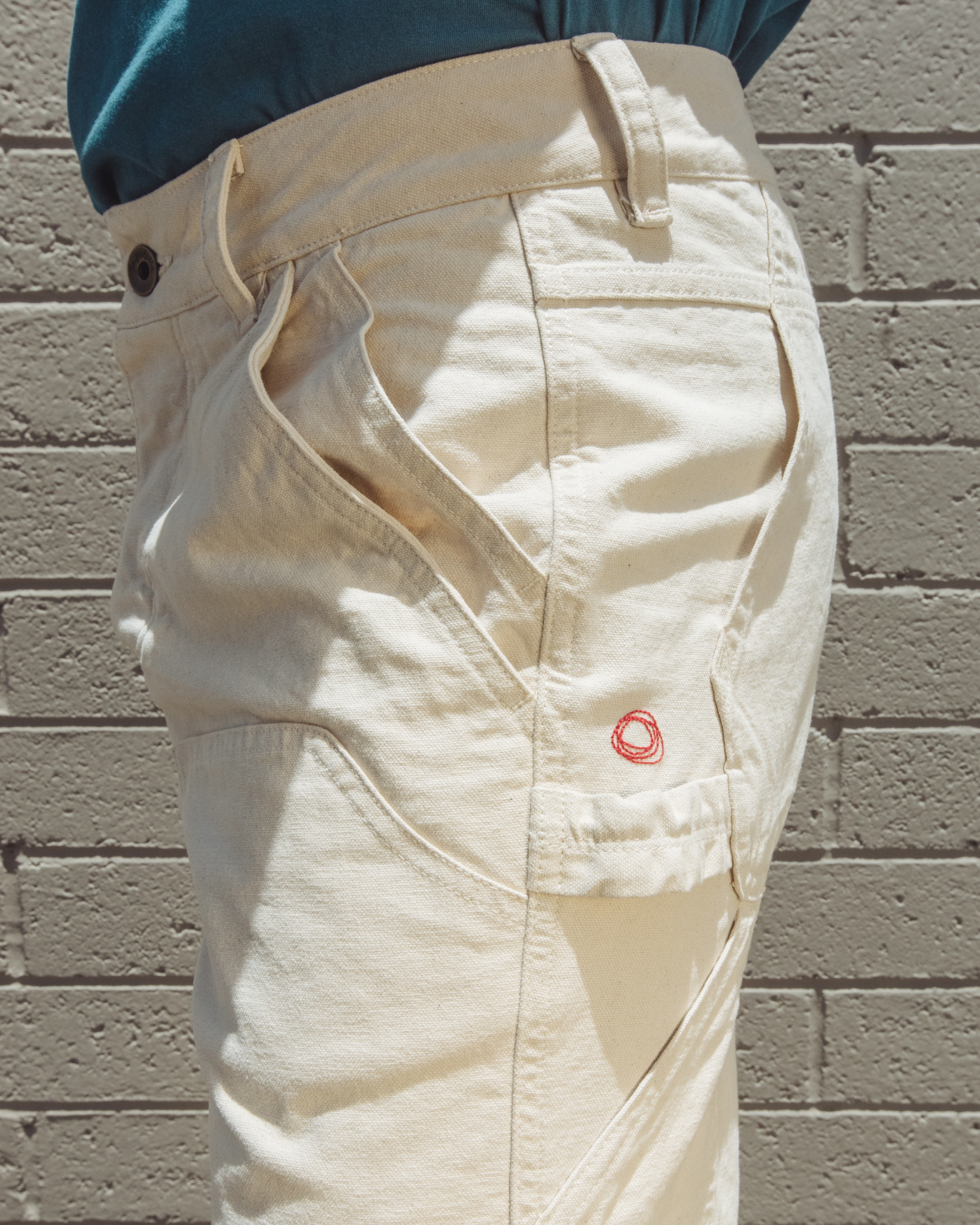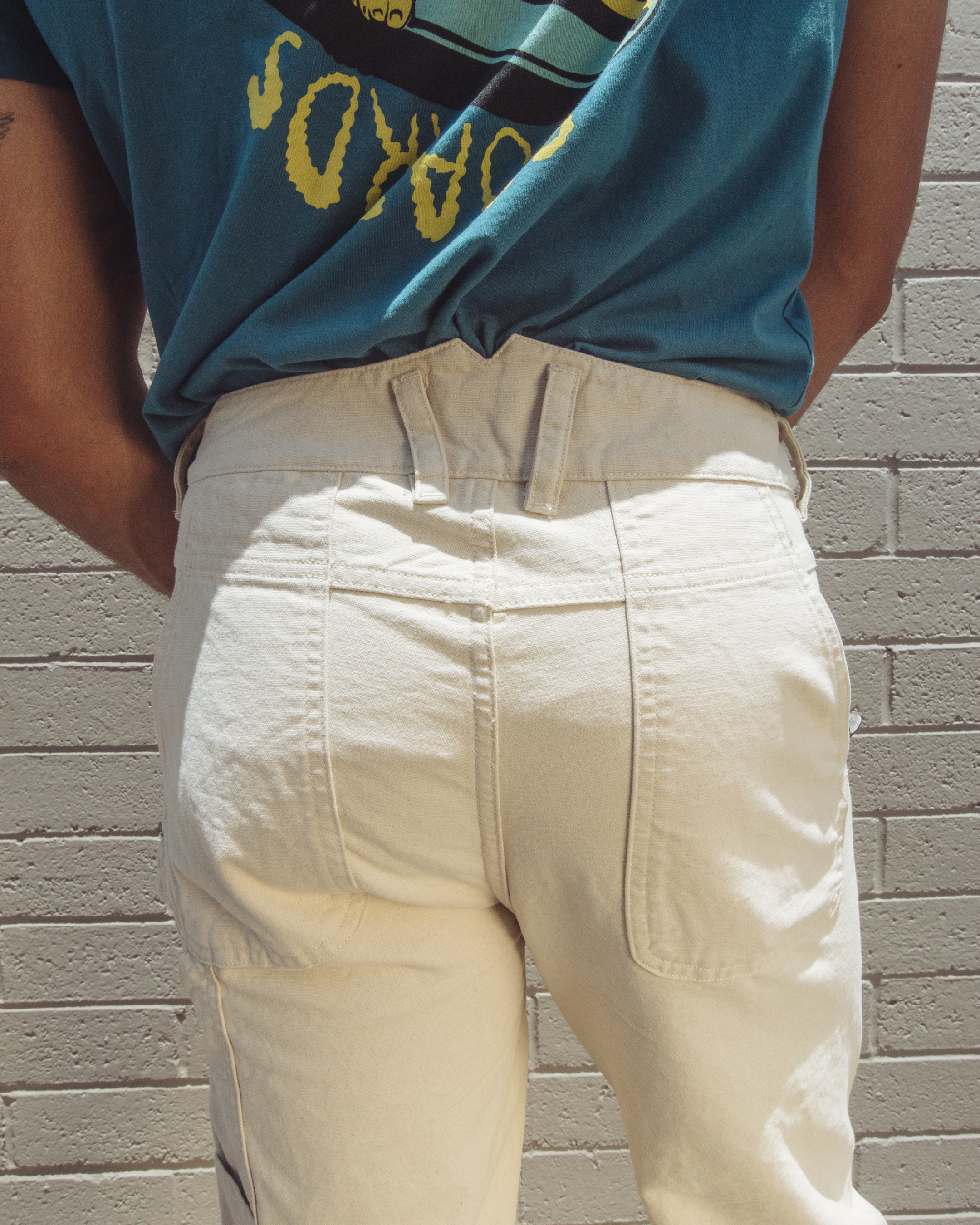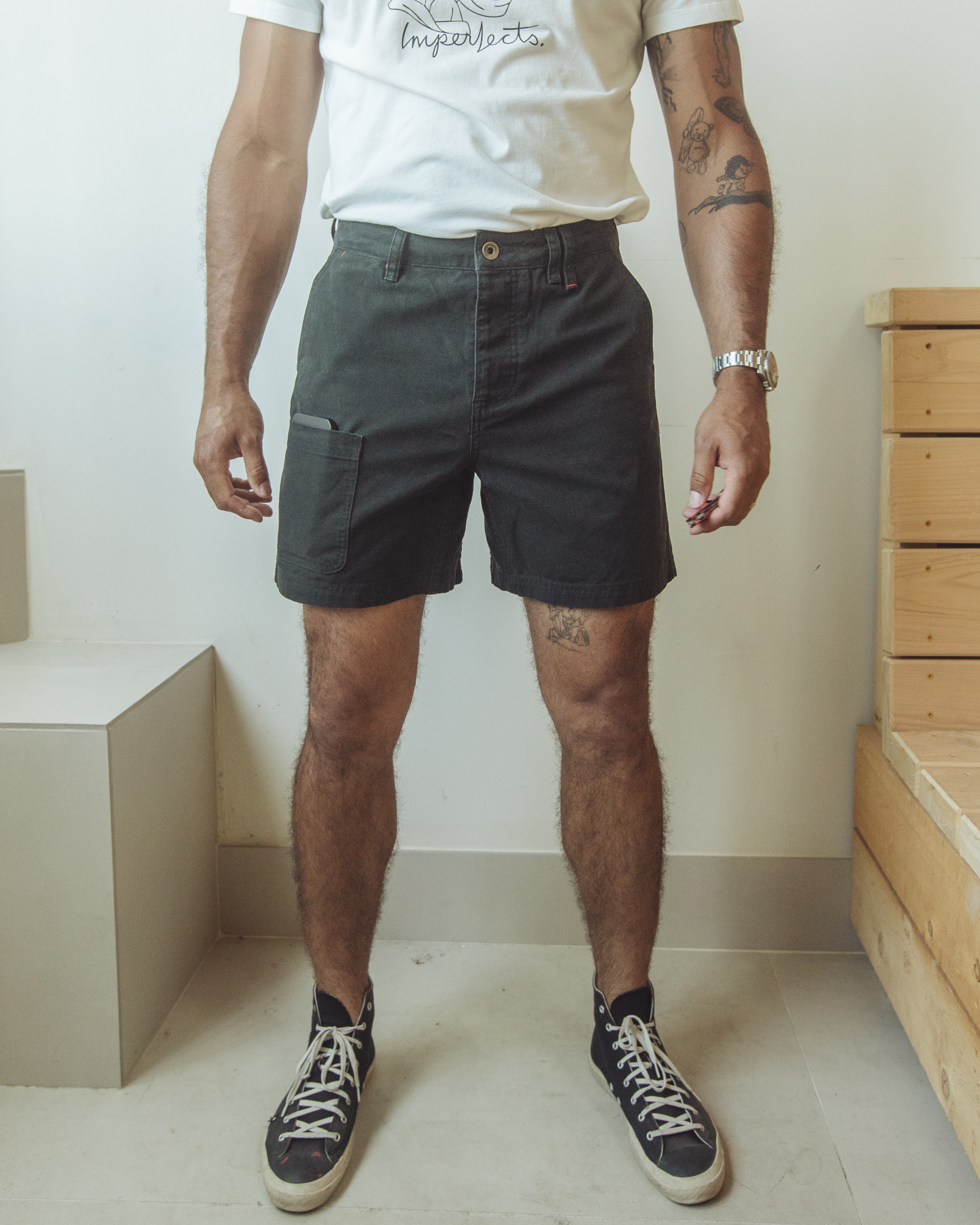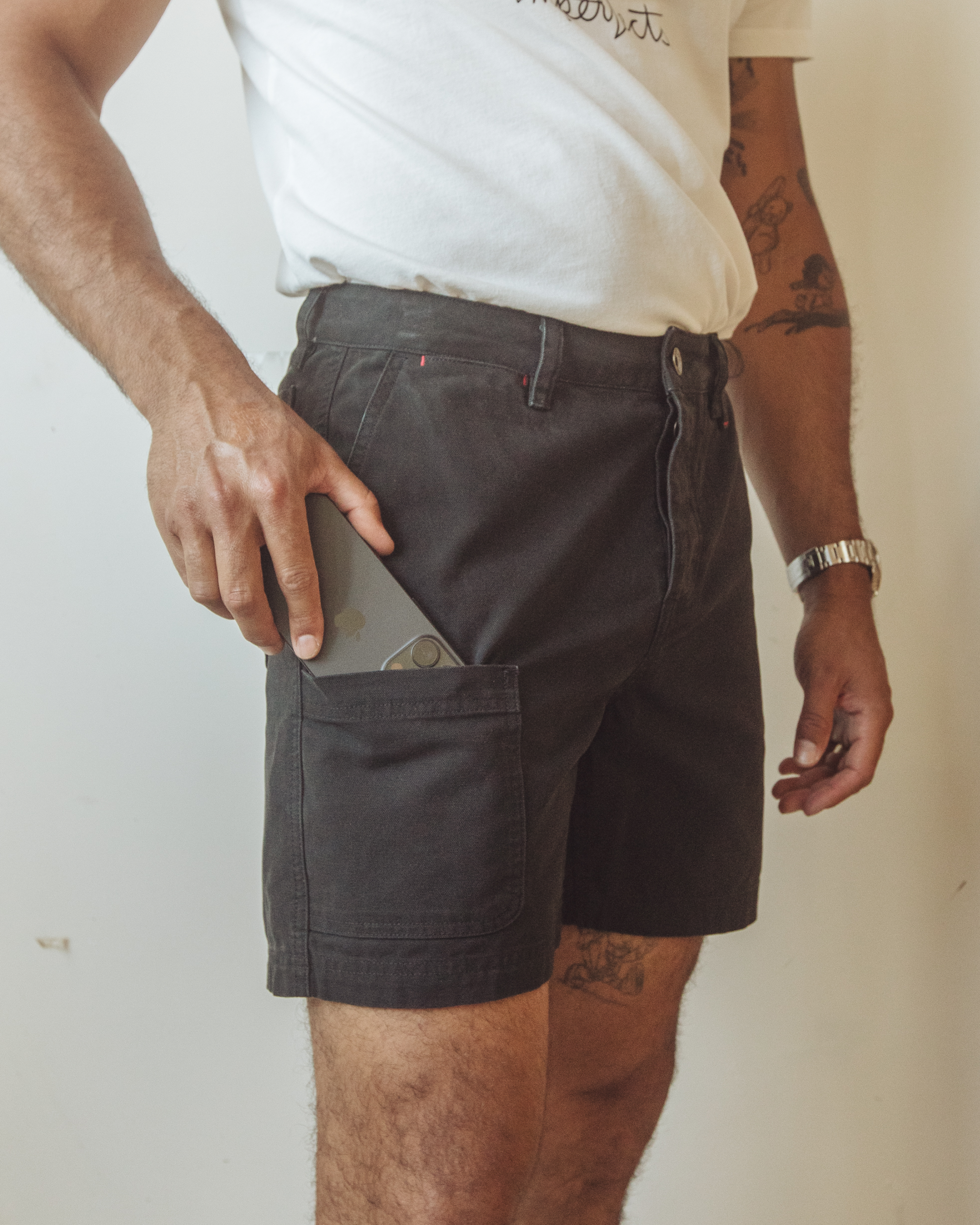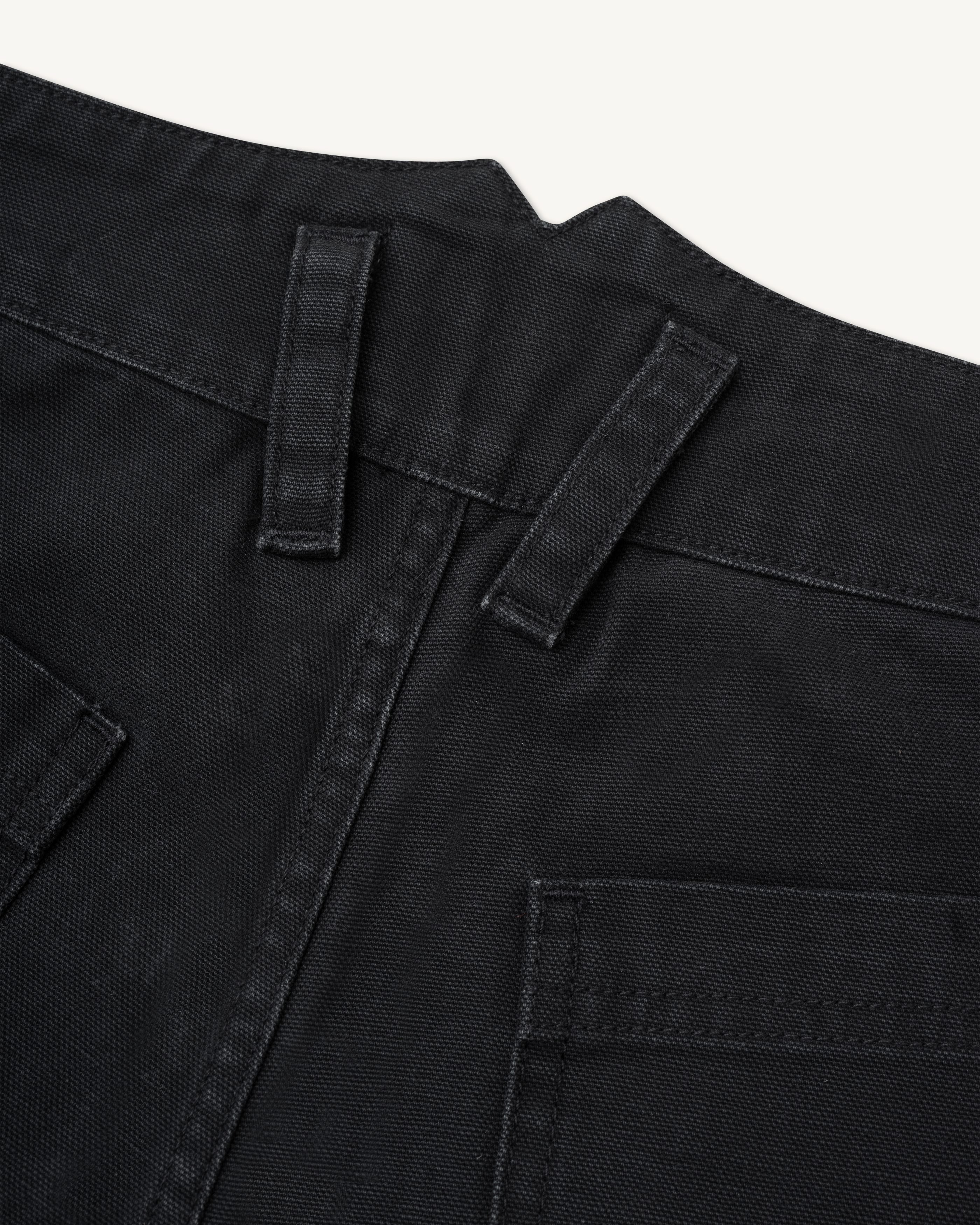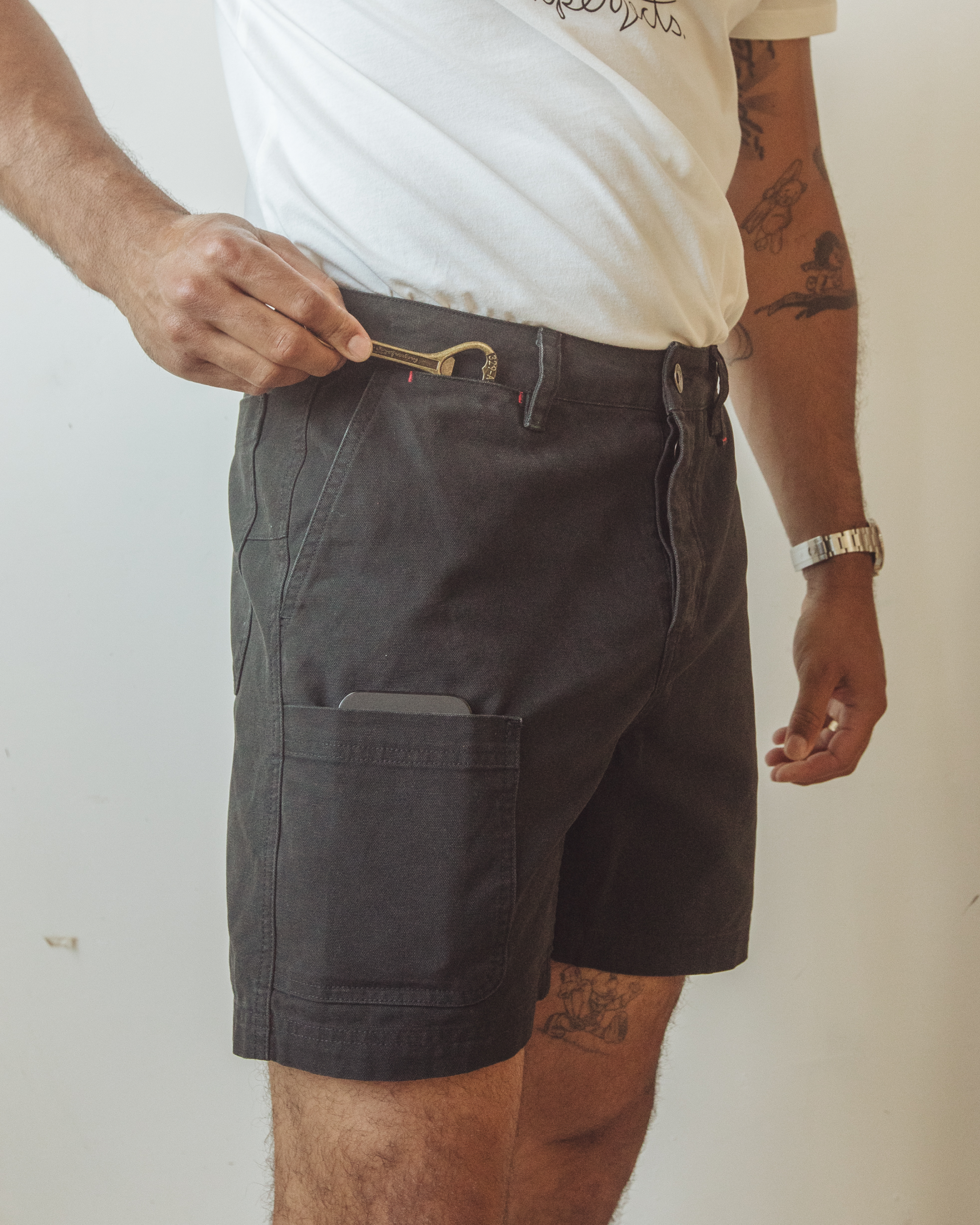Kaspar Heinrici and I met on a beach in Nicaragua more than 8 years ago. After one too many Tona's, fresh ceviche, and the best day on the water either of us had ever experienced, we somehow ended up drawing patterns in the sand with broken branches. Kaspar and I chatted that day for quite some time. When I discovered his interest in geometric pattern design, I knew we would be pals forever.
Fast forward to the present time, Kaspar and I have chatted about doing something creative together, and it just felt right to do something involving both of our first loves, skateboarding. I designed the little spear skateboard more than a year ago, and Kaspar quickly followed up with an epic Vibeman kaleidoscope feeling sketch. That turned into a vector and now we have the Kaspar Little Spear. From there, we decided to enjoy the slow process of designing. Creativity is most enjoyed when you are not creating for a deadline, rather creating to create. This capsule is the antithesis of any creative deadline, it is born out of pure love for the hobby and perhaps even, selfish enjoyment.
We finally landed on a few pieces we think are really special, as they pay homage to Kaspar's professional screen-printing background. Please enjoy our limited series capsule collection, which we are calling 'Vibeman for President.'
How to Draw Boxman
KASPAR VIBEMAN X IMPERFECTS
As part of our collaboration with Kaspar Heinrici, we put together some vintage wash sweatshirts and accompanied them with an oversized 4 color Vibeman embroidery hit as well as a special hand-sewn collab tag.
When did you realize you were an artist?
I was born directly into the art world, but resisted becoming an artist. My parents lived in NYC in the 70s and my father is a fine art silkscreen printer who actually just shut down his studio this year to retire and my mother is an architect. The irony is that while I worked in galleries and museums for years, my understanding of “Art” made me strongly resist the idea of being an “Artist.” It was a long journey before I could comfortably refer to myself as an “Artist”. I always felt that to be an artist was to lack discipline and to live at the mercy of patronage even though I constantly had a sketchbook and would continuously fill it with visual ideas as an artist might.
Before I would self apply the term artist I had to pursue other fields that I thought would qualify as being more rigorous. In college, I studied cultural anthropology and spent months studying in Nepal. I was obsessed with different worldviews and how that affected the objects that people made. I wanted to understand the intersection between function and decoration and what attracted people to objects for purely aesthetic reasons. After college, I lived in Vienna working at an art gallery and spent nights making sculptures that I deemed “architectural models” I would make drawings that were highly graphic so as not to veer into “Art.” In my late 20’s I had to figure out what it was I doing if I was not an artist. I tried taking graphic design continuing education classes, but I kept bringing in three-dimensional models until the teacher said there was a name for what I was doing and it was called, “industrial design.”
At 27, having never taken a drawing class (which is a foundational skill of industrial design) I decided to try for an industrial design graduate degree at The Pratt Institute in Brooklyn. Many people, including Alumni of Pratt, told me I would never learn to draw well enough to use drawing as a working designer. This only spurred me on. I had spent years in galleries and museums studying line weight and perspective and now it was time to put it into practice. I could sit in on a fashion drawing class and do 10-second figures or work the shading on the surface of a vehicle rendering for hours. Pratt really is more of an art school and the things we made always looked like they would be more acceptable on a pedestal in a conceptual art show than as a product on a shelf, but it was enough to convince myself that I was still not an “artist” I was a designer.
When I graduated I began designing watches. Watches are an amazing product because they are highly technical and yet they are pure fashion. It's rare that anyone wears a watch to actually tell the time. This thought brought me back to my cultural anthropology, if people do not buy objects for their function then what is it that attracts them to these human-made objects? I had handled paintings and sculptures worth millions of dollars in galleries and museums simply for their aesthetic value and figured I could bring that value to product design. When I would work on a steel watch finish I would think about the luster of a brushed aluminum Donald Judd sculpture. What is it that makes someone choose black plating vs gold or rose gold? Brushed vs shiny? Finding new ways to combine leather, steel and the graphic design of dials was a passion that consumed me for a decade.
I think it says something that I designed women’s products. In general, I am attracted to bold colors and unexpected shapes. In my opinion, designing fashion products for men involves a lot of black, blue, and brown in pretty traditional forms. After watches, I took on jewelry and eyewear always looking for something new to do. We got into smartwatches and the possibilities become endless when you pretty much have a phone on your wrist. I was managing a team, we were producing fantastic products that lifted the bottom line as well as fantastical conceptual limited edition projects that would have been at home in a Pratt critique, but somehow it began to lose its sense of purpose for me. I wanted to do things that had more of an immediate impact on people’s perceptions and less of an impact on the environment.
In 2017 my wife and I quit our jobs, we were living in Dallas, TX at the time. We drove to Baja to visit my sister and brother in law, he gave me a surfboard, we drove up to Tofino Canada and I tried to surf every break along the way. We ended up traveling for an entire year around South East Asia and then Europe. When you do something like this your brain chemistry changes. We were down for whatever, literally whatever we imagined. “Hey wouldn’t it be cool to go to an ashram in India?” Next thing you know we land in India with no local currency, no booking, and no idea where we should go. Rather than routine, the world starts to present itself as an opportunity, you can pull a thread and see where it goes. Along the way, I would imagine filling surfaces of buildings and public structures with my drawings. It seemed to me that taking grey urban spaces and giving them life through art was a much better way to practice design (or was it art now? Did it matter anymore?). Public art reaches so many people, it does not ask for compensation and it does not require destroying so many of the world's resources for everyone to experience it. I began photoshopping my art onto walls and posting it to Instagram as “mural proposals.” A friend of mine through skateboarding who builds parks saw one of these “proposals” and knew I had some free time. He was building a skateboard park in China at an international school and wanted the space to inspire the students by reflecting the style and freedom of skateboarding. Would I go to China to paint this skatepark? No pay, but airfare, lodging, and food for a month would be covered. When you find yourself accepting an art commission for no monetary compensation simply to experience a new place with new people and see what you can make for making’s sake…that was when I would finally have considered myself an artist
KASPAR VIBEMAN X IMPERFECTS
At the center of our friendship with Kaspar, is a pure love for Skateboarding. Kaspar is a rad distance skater who has set records pushing for literal 'days' long - we respect that. In an effort to combine our love for bombing hills and having a pocket skate always at the ready, we designed this Little Spear. A special couple slabs of maple, made right here in San Diego featuring the all over Vibeman print, wheel wells and a lifted diamond tail with a flat deck. Very limited run.
What is your earliest experience with 'Art'?
Man, I’m going to be putting Art in quotations a lot! I remember going to art openings as a kid and making a dinner out of wine and cheese. I remember going to a place called the “Art Barge” out in Napeague, NY to do finger painting or build things out of driftwood. When I was 6 or 7 my father took me to meet Keith Haring and he gave me a barking dog shirt. It is turquoise with a red outline and yellow fill. I had a Robert Indiana print on my wall growing up and the way he rendered the reflections of numbers in water still stick with me. Our house was filled with masters of the NY pop art world sprinkled with some of the hardcore Actionists of the 60’s Viennese art scene. It was easy to take it for granted. I grew up analyzing visual phenomena, memorizing color relationships and effects but didn’t realize I was living in a museum of silkscreen prints. I was experiencing the aesthetics of “Art” but I also sensed there was a politics to it as well. The marriage of value to aesthetics always sets up a power dynamic and I think that is what made me keep a healthy distance.
What is your preferred medium?
My specialty is color, so whatever allows me to express color. The way colors interact and layer in transparency is central to what I usually make so markers, watercolor, and more recently natural pigments. Often the colors I use represent shading or infer depth through a change in value and hue (a shadow usually reads as the complementary of the object itself or its adjacent surface).
I like to find a medium between precision and serendipity. In design drawing, many people think that one dreams up an idea and then draws it, but if that were the case then every object would be the boring first idea that someone had in their head. To me, the act of drawing itself should inform the idea. A messy line or an unintended spatter becomes an innovative new part of the idea so that your preconceived ideas are interacting with your marks in real-time and becoming something that you could never have predicted if you just tried to imagine something and draw it. Drawing is not just rendering, it actually engenders ideas that you are not aware exist until you start to fill the page and give meaning to the marks.
The problem with paper is that it is very limiting in size. I find my patterns and visual concepts work much better when they are able to alter the environment at the human scale so that one feels enveloped in them, that’s why I love painting very large walls.
Can you tell me a little about your upbringing and how skate was a part of that?
I have a funny picture of me at the age of 6 standing on a Walmart style pool deck with colorful grind guards in front of the Christmas tree wearing a double-breasted blazer. The incongruity of this photo is always arresting to me. When I was 11 my parents divorced and we moved to Eugene, OR. That’s when I started to skate, but I skated mainly for transportation. We lived at the top of a huge butte and most places in town were downhill from my house, so I learned to power-slide so I could speed check down the hill on my (at this point upgraded 90’s style) pool board. I’m not sure when I discovered longboarding, but I realized that it was an efficient way to get around. With a skateboard, I could be gone all day and be autonomous, so it was a big part of becoming independent and exploring around Eugene.
Years later when I moved to NYC in 2003 a guy I met asked if I wanted to participate in a longboard race, which at the time I didn’t know existed (because they didn’t at the time this was one of the first in NYC). I got a third. A few months later was the second running of a race that is now known as the Broadway Bomb where I also got 3rd place (do a youtube search for videos of this now infamous race). At this point, I have been racing skateboards for almost 18 years. I got into downhill tech sliding on Watchtower Hill in Brooklyn, I started racing downhill out at Maryhill in Washington, I got into Houston style full contact garage racing when living in Dallas for seven years, but I always come back to long-distance racing. My more recent skateboarding adventures involved setting a world record with a team of 3 others from the US in the 24hr Dutch Ultramarathon in Amsterdam in 2019, then going to a marathon distance race in Beijing, China. Skateboarding is a constant that spans every age and has introduced me to people and places all over the world. When my wife and I traveled for two years I even brought a tiny 1975 plastic banana board that I used to get around. I guess you could say that I could survive on waves or skateboarding and art supplies.
You seem to be an epic study in pattern style sketch - where does that come from?
You got me there. In high school, I would do a lot of radial symmetry pattern making and I would doodle patterns, but it was in graduate school that I embraced it. I had a professor named Martin Skalski who took color theory and extended it into patterns and textures linking them all to a relationship with three-dimensional surfaces. Patterns are how we navigate in the world, the way we order things is based on conceptual patterns. I like to make visual patterns that are sensitive to the three-dimensional surfaces they exist upon. I was not convinced creating patterns represented a sophisticated art form until I lived in Vienna and saw the work of Koloman Moser and Josef Frank. I have an archive of some of my favorite sketchbook pattern studies on my website http://www.kasparheinrici.com/mural-design#/sketchbook2-1/
For my graduate thesis, I created three-dimensional patterns that acted as padding for skateboarding gear while adding extra visual stimulation to the performance of tricks when the athlete spins or moves. The videos of me skating in the prototype are still pretty funny to watch.
If I had to pin it down I would say patterns are where art meets design, because it is a repeatable artistic phenomenon. Creating patterns is like taking an artistic concept and boiling it down, codifying it into a repeatable event.
KASPAR VIBEMAN X IMPERFECTS
The Vibeman, by Kaspar, is a representation of all things good - a reminder to keep moving, keep skating, keep surfing, and stay creative. Very limited run of these special pull-overs.
Does artistic endeavor run in your family?
It seems to.
August Heinrici @august.heinrici: My brother is a self-taught architect, but went to school for fine art. When he was very young he started building whole cities in the sand from materials found at the beach that had people stopping to marvel at them. He went to art school, started doing landscape design, got into residential development, started designing and renovating his properties one at a time in L.A., and continues to do the same in Barcelona. He is compelled to design absolutely everything often down to the hardware that he will have local craftspeople make for him.
Aleka Heinrici @busca_alma: My sister is a family doctor specializing in recovery medicine, but does not fit the description of what you might imagine for a doctor. Her Instagram profile reads “Healer/Kitchenwitch/M.D.” Imagine a tattooed tiger mom, who followed the Grateful Dead rather than go to high school and still managed to get a medical degree at OHSU. Her medium is music. She has been singing and songwriting since I can remember and can still make heart-wrenching recordings just using her phone and a guitar.
Elizabeth Spurgeon: My mom’s most artistic talent is in watercolor and painting which she has been doing her whole life. She used to hand watercolor all her architectural renderings. She is now an architect who is currently renovating a church from the 1800’s in Nevada. Her obsession with design details is rivaled only by my brother.
Alexander Heinrici: My father I would not characterize as an artist, but he is a master of color and visual perception. His job is to take the work of artists and recreate it as a silkscreen print, which is an art form in and of itself. Silkscreen takes years of experience to truly master and he is one of the few people left with the level of experience to be considered a master printer.
Alexandra Filippelli @theroughlycut: My wife is a ceramicist and archivist. She writes and draws on a daily basis in her journal. She makes pottery, embroiders, takes photographs gets crafty AF on the regular.
Why do you enjoy skating? What does it do for you?
For me stepping on a skateboard is like stepping into the water. I feel at home. Time can go by with no skating and then I jump on board and wonder why it has been so long? I have skated for 24hrs straight, I have skated 188 miles over 3 days. It becomes an extension of your own body. There is an expression in skateboarding, “walking is for suckers” and it’s just true. If you can have the feeling of gliding and flying over the earth, why would you walk?
Skating is art. The primary proof of this is the lack of rules. You can try to make rules or curriculum for skateboarding, but at the end of the day you only learn through action and I feel it is the same for art. The freedom of expression that exists in art also exists in skateboarding. That freedom disregards all rules. There is no right way to skateboard there is just a personal curation of movement that everyone establishes for themselves.
For example, the pattern I did based on the Vibeman who surfs, jumps, bends, and breakdances is based on the idea of curated movement. I think of skateboarding in this way. Whereas art is a curation of visual concepts like color and form, skateboarding is the curation of movement. Every move that can be done on a skateboard is done differently by different people and expressed in a different style. This relationship between visual art and physical motion is something I try to bring that into my art.
When I painted the skatepark at the International School of Ningbo in China I created patterns that flowed with the surfaces, speeding up and slowing down visually, expanding and contracting in a way that corresponds to the forces that the skater is feeling. When you skate the pump track there if feels like being in a videogame, because the graphics underneath your feet correspond to your speed and the angle of your body as you flow around the transition.
Who are you listening to 'music-wise' during the 'demic?
Things that make you feel good!
I like to put on William Onyeabor or Steve Monite and feel the Nigerian afro boogie or just get nostalgic for listening to the radio in the early 90’s and rediscover bands like Dee-Lite and Digital Underground (the first time I ever heard 2Pac on “same song”) and then the mix might veer into Bobby Brown and Bel Biv Devoe…Montell Jordan, ok by then I usually have to change it.
Where did the idea of the “Vibeman” come from?
I have always been interested in human movement. I used to take dynamic acrobatic classes at a circus school. For workouts, I would prefer to find a tree and look for ways to interact with it rather than do set movements from a workout routine.
In graduate school, we used to do a drawing exercise where we would draw a box in perspective and then have 10 seconds to fill it with a figure. It is exciting because you don’t know what you are going to draw and you don’t have time to think about it. It is pure unconsciousness. My figures would always become geometric and stylized and I guess I always felt bad keeping them caged in the box. These figures had a vibe and they wanted to express themselves, so I began letting them break out and they started to creep into product designs and artwork and patterns and now they have danced onto the bottom of an Imperfects deck!
For this particular execution, the idea was to create all the secondary colors necessary by layering primary colors in transparency. This is where the Imperfects attention to detail comes into play. A traditional manufacturer would have done a 4 color separation and you would see a dot matrix to establish all the colors. Imperfects executed the design exactly as intended with the green being created by the layering of vibrant yellow and blue. The darkest shade in the design layers another darker blue over the green to get a deep forest green. If you look closely at the design, the seemingly simple palette creates all kinds of sophisticated colors. To create a sense of movement I offset the exterior lines which could easily get messy if not registered properly during printing, but the manufacturer registered the layers perfectly so that each color layer is perfectly aligned.































![Shepherds Shirt in Shipyard Canvas [Batch #3]](http://imperfects.com/cdn/shop/files/CopyofShepherdsShirtinBarrelAged-2edited_1a472f41-13fc-4514-9992-80f66cb2a4ad.png?v=1762444882&width=3840)
![Shepherds Shirt in Shipyard Canvas [Batch #3]](http://imperfects.com/cdn/shop/files/ShipyardCavas1-4x5_fcbab3ed-3d26-4237-9797-885c5abd621b.png?v=1760988905&width=3840)
![Shepherds Shirt in Shipyard Canvas [Batch #3]](http://imperfects.com/cdn/shop/files/ShepherdsShirtinBarrelAged.png?v=1760988905&width=3840)
![Shepherds Shirt in Shipyard Canvas [Batch #3]](http://imperfects.com/cdn/shop/files/CopyofShepherdsShirtinBarrelAged-3edited.png?v=1760988905&width=3840)
![Shepherds Shirt in Shipyard Canvas [Batch #3]](http://imperfects.com/cdn/shop/files/ShepherdsShirtinBarrelAged-6.png?v=1760988905&width=3840)
![Shepherds Shirt in Shipyard Canvas [Batch #3]](http://imperfects.com/cdn/shop/files/Shepherds_Shirt_in_Rinsed_Kelp_copy.png?v=1760988950&width=3840)
![Shepherds Shirt in Shipyard Canvas [Batch #3]](http://imperfects.com/cdn/shop/files/ShepherdsShirtinBlackNavyShipyardCanvas-5.png?v=1760988950&width=3840)
![Shepherds Shirt in Shipyard Canvas [Batch #3]](http://imperfects.com/cdn/shop/files/CopyofShepherdsShirtinRinsedSailoredited_ba350eb7-7302-4239-b6b3-f7640a6e4fda.png?v=1760988905&width=3840)










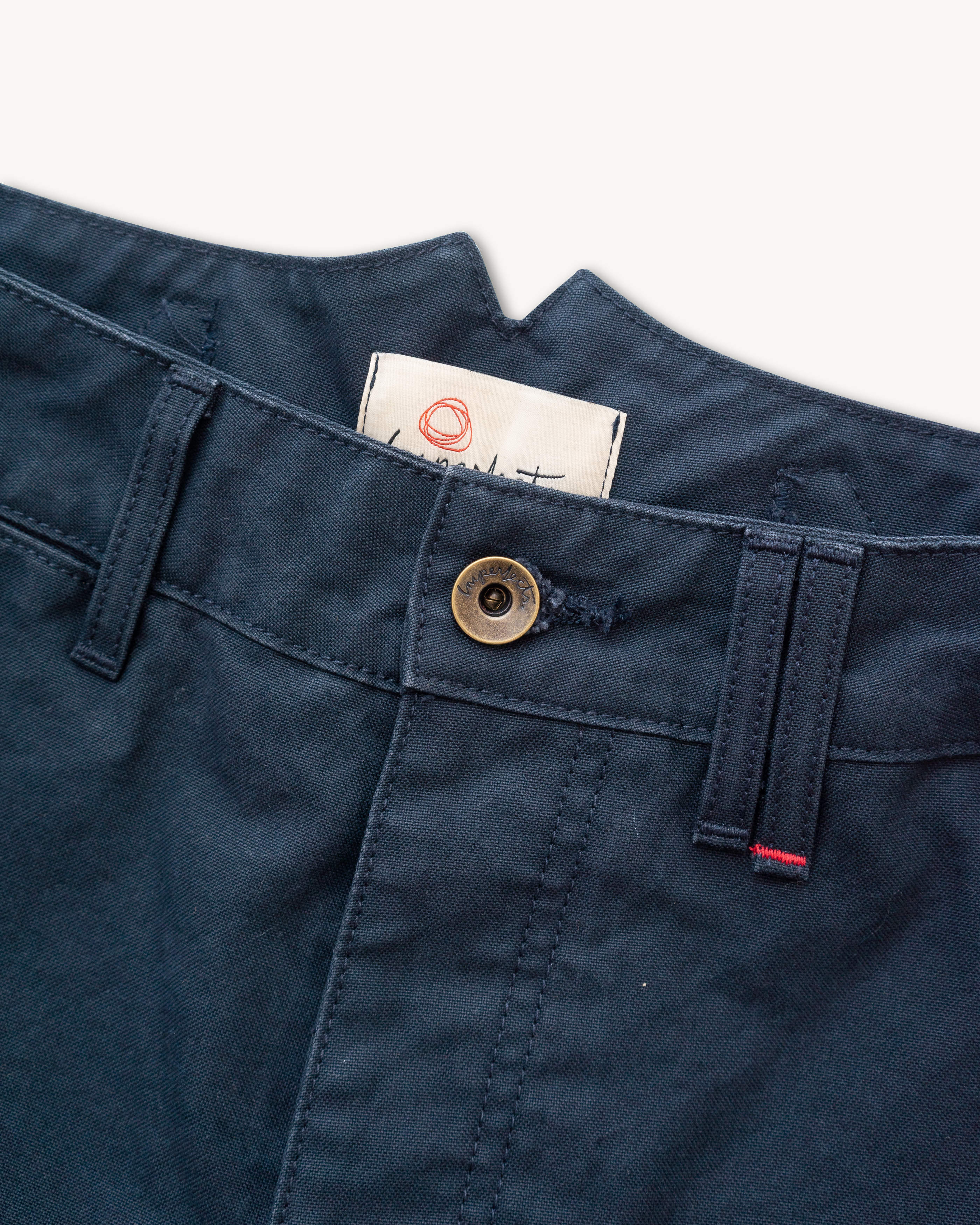
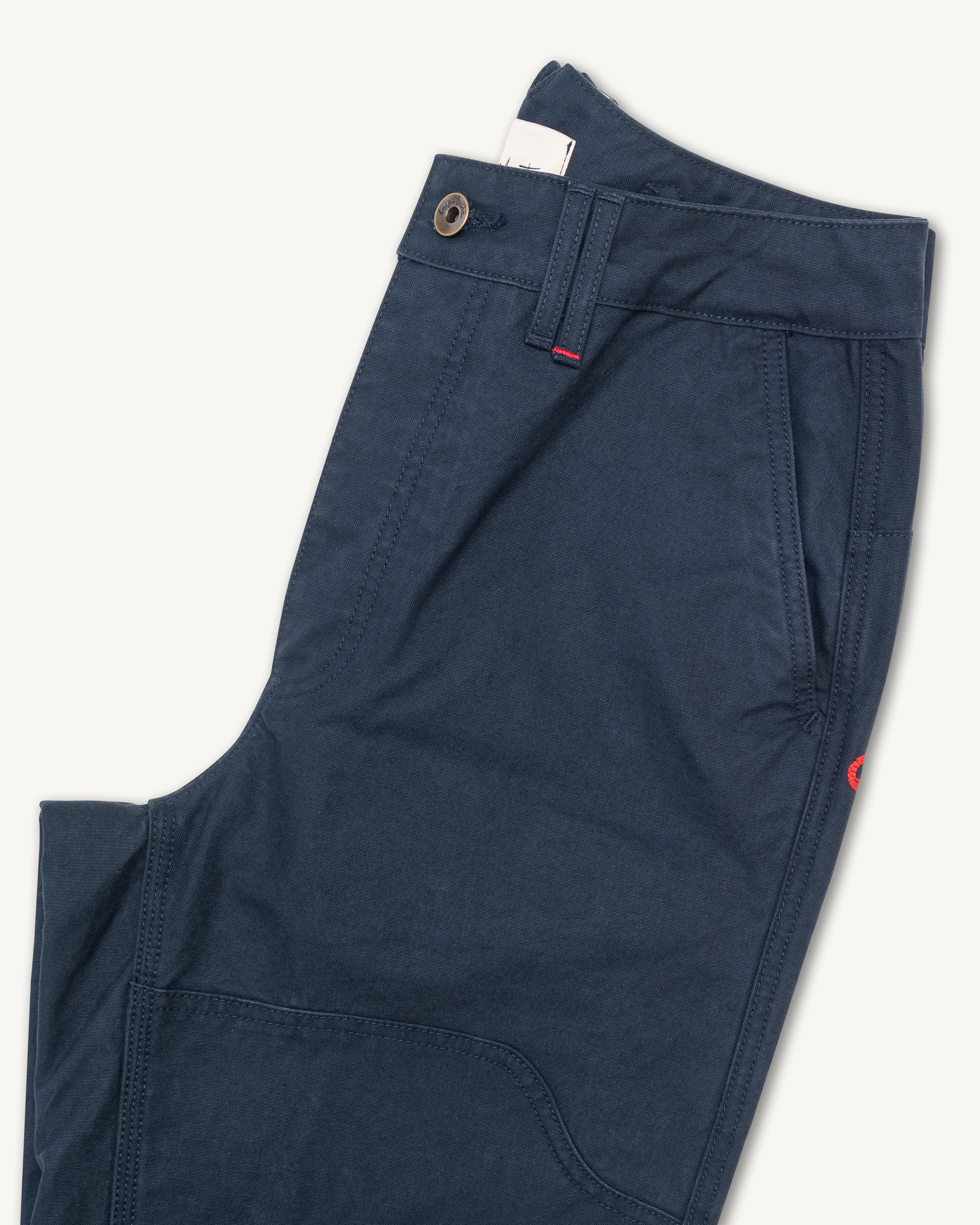
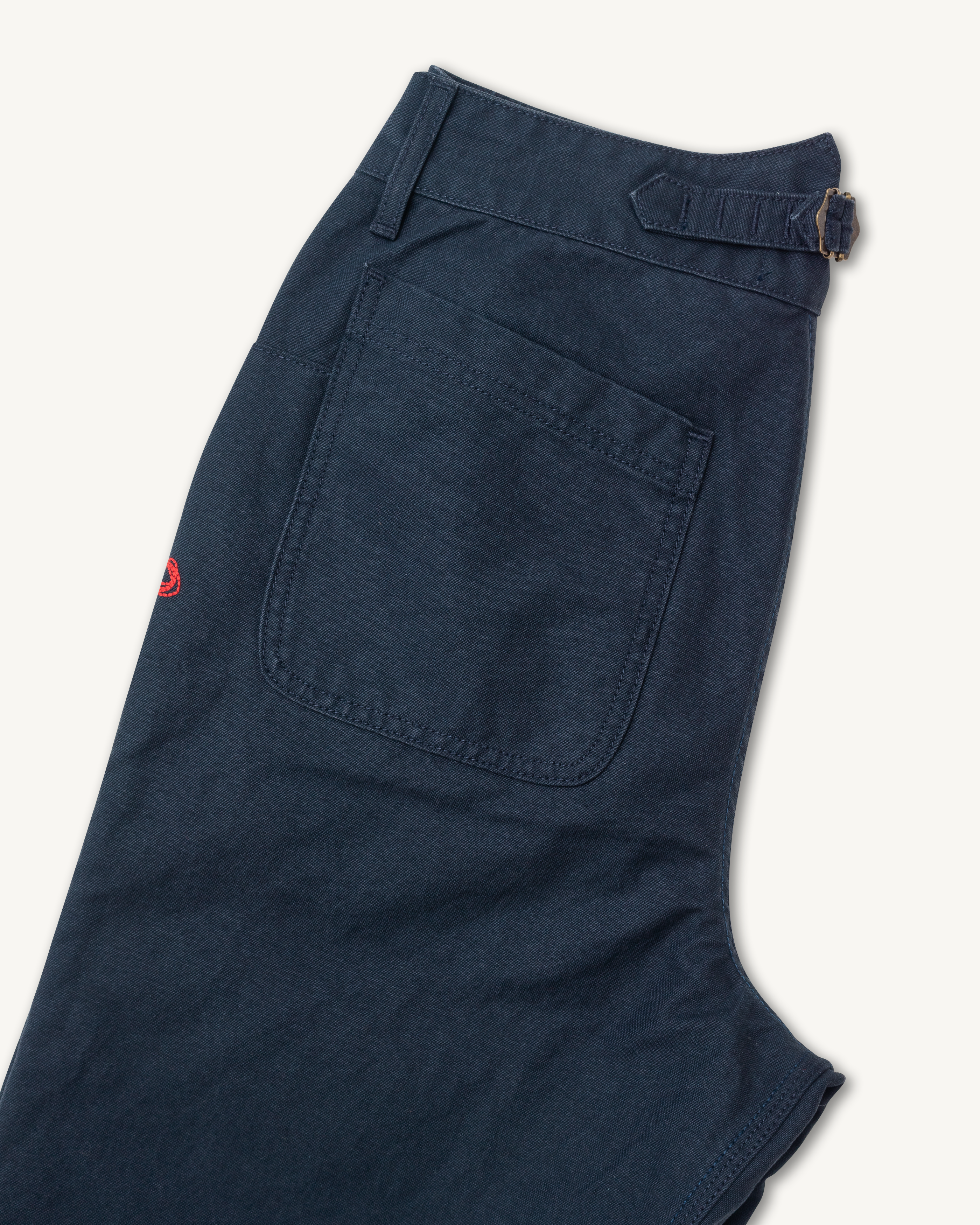
![Courier Pant in Shipyard Canvas [Batch #3]](http://imperfects.com/cdn/shop/files/CourierPantinBarrelAged-9.png?v=1720289060&width=3840)
![Courier Pant in Shipyard Canvas [Batch #3]](http://imperfects.com/cdn/shop/files/CourierPantinRinsedKelp-10.png?v=1718064889&width=3840)
![Courier Pant in Shipyard Canvas [Batch #3]](http://imperfects.com/cdn/shop/files/CourierPantinRinsedSailor.png?v=1719609358&width=3840)










